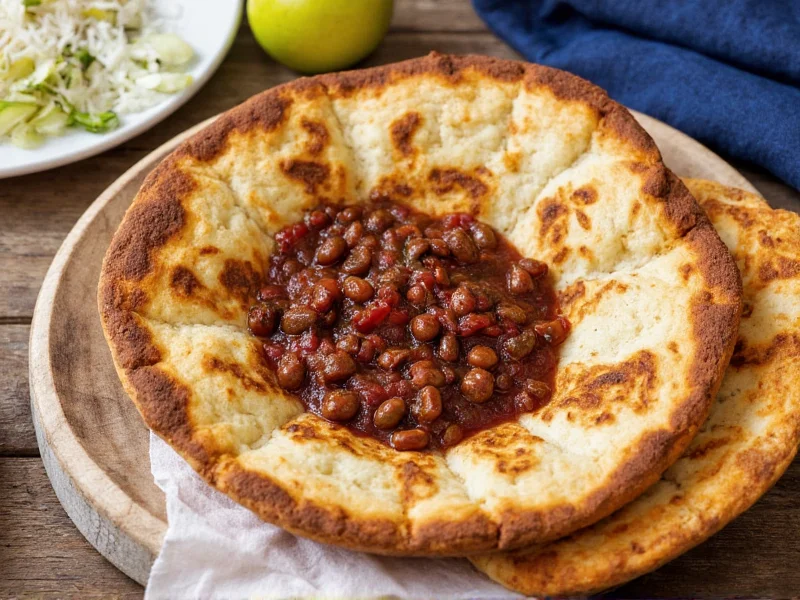Feijoada's rich history reflects Brazil's complex cultural tapestry. This hearty black bean stew with pork components represents more than just a meal—it's a culinary artifact of Brazil's colonial past and cultural evolution. The dish's journey from humble beginnings to national treasure reveals fascinating insights about Brazilian identity, resourcefulness, and cultural synthesis.
Portuguese Roots and Brazilian Transformation
The story of feijoada begins with Portuguese settlers who brought their tradition of bean stews to Brazil during colonization. In Portugal, dishes like cozido featured beans with various meats, but the Brazilian version developed distinct characteristics through necessity and cultural blending.
African slaves working on sugar plantations creatively adapted these Portuguese recipes using available ingredients. Denied the prime cuts of meat consumed by plantation owners, they transformed undesirable pork parts—ears, feet, tails, and salted meats—into a nourishing stew with locally grown black beans. This resourceful adaptation became the foundation of what we now recognize as traditional feijoada.
Historical Development Timeline
| Period | Key Developments | Cultural Influences |
|---|---|---|
| 1500-1700 | Portuguese settlers introduce bean stews to Brazil | Portuguese culinary traditions |
| 1700-1800 | African slaves develop resourceful version using available ingredients | African cooking techniques, indigenous ingredients |
| 1800-1900 | Adopted by Brazilian elite, becomes national symbol | Brazilian cultural identity formation |
| 1900-Present | Regional variations emerge across Brazil | Modern culinary interpretations |
Debunking Common Misconceptions
Many believe feijoada originated directly from Portuguese cuisine, but historical evidence shows significant transformation in Brazil. While Portuguese bean stews existed, the specific combination of black beans with multiple pork cuts represents a uniquely Brazilian innovation. The dish's evolution demonstrates how enslaved Africans transformed limited resources into a culinary masterpiece that would eventually be embraced by all social classes.
Another common misconception suggests feijoada was always considered a celebratory dish. In reality, it began as sustenance food for enslaved people before gaining popularity among the Brazilian elite in the 19th century. This transition from humble origins to national symbol reflects Brazil's complex social history.
Cultural Significance and Modern Interpretations
Feijoada's journey from plantation kitchens to upscale restaurants illustrates Brazil's cultural evolution. By the late 19th century, it had become a unifying national dish, celebrated for its representation of Brazil's mestiçagem (racial and cultural mixing). Traditional Saturday feijoada meals became social events, often accompanied by farofa (toasted cassava flour), orange slices, and caipirinhas.
Today, regional variations showcase Brazil's diversity. In Rio de Janeiro, feijoada typically features black beans with multiple pork components, while São Paulo versions sometimes use-------------
Authentic Historical Ingredients vs. Modern Adaptations
Original feijoada preparations relied on ingredients accessible to enslaved communities: black beans, salted pork parts, and whatever vegetables were available. Contemporary versions often include premium cuts of meat and standardized recipes, but traditionalists maintain that authentic feijoada must incorporate the full range of pork components that reflect its historical origins.
The dish's preparation method also carries historical significance. Traditional feijoada requires slow cooking—often over multiple days—to develop complex flavors and tenderize tougher cuts of meat. This method preserves the culinary wisdom passed down through generations, connecting modern Brazilians with their historical roots.
Feijoada as Cultural Heritage
In 2021, Brazil's National Institute of Historic and Artistic Heritage recognized feijoada as part of the country's intangible cultural heritage. This official designation acknowledges the dish's role in representing Brazil's multicultural identity and historical journey. The recognition specifically honors the African contribution to Brazilian cuisine and culture through this iconic dish.
Understanding the history of feijoada provides valuable insight into Brazil's social development and cultural synthesis. The dish's evolution from necessity food to national symbol mirrors Brazil's own journey of identity formation—a blend of indigenous, African, and European influences creating something uniquely Brazilian.
Frequently Asked Questions
When was feijoada first documented in Brazil?
The earliest documented references to feijoada in Brazil date to the late 18th century, with more detailed descriptions appearing in the early 19th century. While similar bean stews existed in Portugal, the specific Brazilian version with black beans and multiple pork cuts emerged during the colonial period as a creation of enslaved African communities.
Is feijoada originally from Portugal or Brazil?
Feijoada has Portuguese culinary roots but is distinctly Brazilian in its current form. Portuguese settlers brought bean stew traditions to Brazil, but the specific combination of black beans with various pork cuts was developed by African slaves in colonial Brazil. The dish evolved significantly from its Portuguese predecessors to become Brazil's national dish.
How did feijoada become Brazil's national dish?
Feijoada became Brazil's national dish through a gradual cultural process in the 19th century. Initially a food of enslaved Africans, it gained popularity among the Brazilian elite who recognized its representation of Brazil's mixed heritage. By the late 1800s, it was celebrated as a unifying national symbol that embodied Brazil's cultural fusion of indigenous, African, and European influences.
What are the traditional ingredients in authentic feijoada?
Authentic traditional feijoada includes black beans cooked with multiple pork components: smoked pork ribs, dried beef (carne seca), pork shoulder, sausage, and less desirable cuts like ears, feet, and tail. The dish also features traditional accompaniments like farofa (toasted cassava flour), couve (collard greens), orange slices, and rice. These ingredients reflect both the resourcefulness of its origins and Brazil's agricultural resources.
Why is feijoada traditionally eaten on Saturdays?
Feijoada became associated with Saturdays due to its lengthy preparation process. Traditional preparation requires slow cooking over one or two days, making it impractical for weekday meals when people worked. Saturdays provided the necessary time for preparation, and the meal evolved into a social weekend tradition where families and friends would gather to enjoy the elaborate dish.











 浙公网安备
33010002000092号
浙公网安备
33010002000092号 浙B2-20120091-4
浙B2-20120091-4